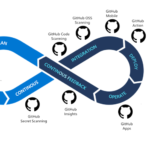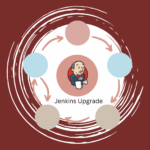Imagine a world where building complex software platforms or automating business processes doesn’t require deep coding skills or waiting months for IT teams to deliver solutions. This is no longer a futuristic dream but a present-day reality thanks to the rise of Low-Code/No-Code (LCNC) platforms. These innovative tools are transforming platform engineering by enabling non-technical teams to actively participate in development and automation, fostering unprecedented agility and innovation across organizations.
Understanding Low-Code/No-Code: A New Paradigm in Software Development
At its core, Low-Code/No-Code refers to software development approaches that minimize or eliminate the need for traditional hand-coding. Instead, they leverage visual interfaces, drag-and-drop components, and pre-built templates to enable users to create applications, workflows, and integrations quickly and with minimal technical expertise.
- Low-Code platforms still require some coding but drastically reduce it, allowing developers and tech-savvy business users to collaborate.
- No-Code platforms require zero coding, targeting business users or "citizen developers" who can build solutions entirely through graphical interfaces.
This paradigm shift democratizes software creation, breaking down traditional silos between IT and business teams.
The Growing Role of Low-Code/No-Code in Platform Engineering
Platform engineering traditionally involves building and maintaining the underlying infrastructure, tools, and services that enable software development and deployment. LCNC platforms are now becoming integral to this discipline by:
- Empowering non-technical teams: Business analysts, operations staff, and other domain experts can build and customize platforms or automation workflows without waiting for developer resources.
- Accelerating innovation: Rapid prototyping and deployment enable faster experimentation and iteration on business ideas.
- Increasing agility: Organizations can respond quickly to changing market demands or internal needs by enabling more stakeholders to contribute to platform evolution.
- Reducing IT backlog: By offloading simpler tasks to LCNC tools, IT teams can focus on more complex engineering challenges.
Real-World Example: Unqork’s No-Code Platform for Financial Services
Unqork, a no-code enterprise application platform, has enabled major financial institutions to build complex insurance and banking platforms without traditional coding. This has reduced development time from months to weeks, allowing business teams to iterate on product features directly and comply faster with regulatory changes. More details can be found at Unqork.com.
Key Concepts and Trends in Low-Code/No-Code Platform Engineering
Citizen Development
Citizen developers are non-IT employees who create applications or workflows using LCNC tools. This trend is growing rapidly as organizations recognize the value of distributing development capabilities closer to business users.
Integration and Extensibility
Modern LCNC platforms emphasize seamless integration with existing systems (e.g., ERP, CRM, databases) and allow extensions via APIs or custom code snippets when needed, ensuring flexibility without sacrificing ease of use.
Governance and Security
As more users build on LCNC platforms, governance frameworks are essential to maintain security, compliance, and quality standards. Platform engineering teams often implement controls like role-based access, audit trails, and automated testing within LCNC environments.
Practical Guide: How to Empower Non-Technical Teams with Low-Code/No-Code
- Identify suitable use cases: Start with business processes or platform components that are repetitive, rule-based, or require frequent updates.
- Choose the right LCNC platform: Evaluate platforms based on ease of use, integration capabilities, scalability, and governance features. Popular options include Microsoft Power Platform, Mendix, OutSystems, and Appian.
- Train and onboard citizen developers: Provide workshops, documentation, and support to build confidence and skills in non-technical users.
- Establish governance policies: Define roles, responsibilities, and approval workflows to ensure quality and security.
- Encourage collaboration: Facilitate communication between IT and business teams to share knowledge and align on platform goals.
- Iterate and scale: Start small with pilot projects, gather feedback, and expand LCNC adoption across the organization.
Latest Tools and Technologies in Low-Code/No-Code Platform Engineering
- Microsoft Power Platform: Combines Power Apps, Power Automate, and Power BI to build apps, automate workflows, and analyze data visually.
- Mendix: A comprehensive low-code development environment with strong enterprise integration and cloud deployment options.
- OutSystems: Focuses on rapid application delivery with full-stack capabilities and AI-assisted development.
- Appian: Low-code automation platform emphasizing business process management and case management.
- Zapier and Integromat (Make): No-code automation tools connecting various SaaS applications to streamline workflows.
Challenges and Solutions in Adopting Low-Code/No-Code
| Challenge | Solution |
|---|---|
| Governance and Shadow IT risks | Implement centralized oversight, approval processes, and auditing tools |
| Integration complexity with legacy systems | Choose LCNC platforms with robust API connectors and middleware support |
| Skill gaps among citizen developers | Provide continuous training, mentorship, and easy-to-access resources |
| Scalability and performance concerns | Use platforms with enterprise-grade architecture and monitor usage metrics |
| Change management resistance | Communicate benefits clearly and involve stakeholders early in the process |
Future Outlook and Emerging Trends
The future of Low-Code/No-Code in platform engineering looks promising with several exciting developments:
- AI-assisted development: AI will increasingly help generate code snippets, suggest workflows, and optimize designs within LCNC platforms.
- Hyperautomation: Combining LCNC with robotic process automation (RPA) and AI to automate end-to-end business processes.
- Multi-experience development: Creating applications that deliver seamless experiences across web, mobile, voice, and IoT devices using LCNC tools.
- Stronger focus on security: Enhanced security frameworks embedded within LCNC platforms to meet stringent compliance requirements.
- Expansion into platform engineering: LCNC tools will increasingly be used to build and manage internal developer platforms, infrastructure automation, and cloud-native services.
Conclusion: Unlocking Agility and Innovation Through Low-Code/No-Code
Low-Code/No-Code platforms are no longer just a buzzword but a transformative force in platform engineering. By empowering non-technical teams to build, automate, and innovate, organizations unlock new levels of agility, reduce IT bottlenecks, and accelerate digital transformation. While challenges exist, thoughtful governance, training, and platform choice can ensure success. The future promises even more powerful LCNC capabilities, making it essential for businesses to embrace this shift today.
Further Reading & References
- Unqork - No-Code Enterprise Platform
- Microsoft Power Platform
- Mendix Low-Code Platform
- OutSystems Low-Code Platform
- Zapier Automation Tool
- “Low-Code Development Platforms for Business Applications” by Forrester Research
- “The Rise of Citizen Developers” - Gartner Report
If you want to explore how Low-Code/No-Code can revolutionize your platform engineering and empower your teams, contact us for expert guidance and tailored solutions.



